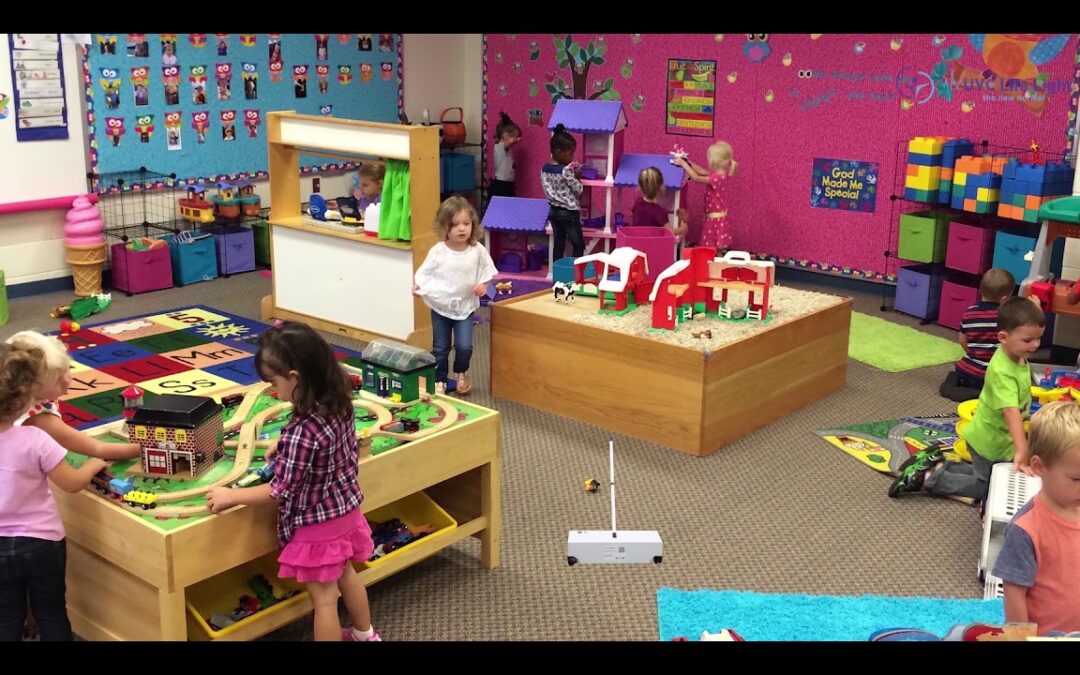
by freyaparker | Oct 15, 2025 | Others
Parents often use the terms day care and child care interchangeably, but there are subtle differences between the two. Understanding these differences helps families choose the best environment for their child’s growth, learning, and safety. Both options play an important role in supporting working parents and promoting early development, but they serve slightly different needs and structures.
In simple terms, day care generally focuses on providing supervision and care during working hours, while child care is a broader term that includes not only daily care but also educational, emotional, and developmental support. Let’s take a closer look at how they differ.
Understanding Day Care
Day care typically refers to a structured environment where children are cared for while their parents are at work. These centers operate during regular business hours and cater to children from infancy to preschool age. The main goal of day care is to ensure children are safe, comfortable, and engaged throughout the day.
Day care centers often follow a set schedule that includes playtime, naps, and simple learning activities. While there is some focus on basic learning, the primary purpose is supervision and care rather than formal education. Many parents choose Day Care Services in Clive, IA because they provide a reliable and nurturing space for children while parents manage their daily work commitments.
Understanding Child Care
Child care, on the other hand, is a broader term that covers all types of care provided to children — whether in a day care center, at home, or through a licensed caregiver. Child care includes not only daily supervision but also developmental programs that focus on emotional, cognitive, and social growth.
Child care services often include educational elements like reading, art, music, and structured play that help prepare children for school. It focuses more deeply on a child’s overall well-being and early learning experiences. While day care is one form of child care, not all child care is day care — for example, in-home nannies, preschools, or after-school programs are also considered child care options.
Key Differences Between Day Care and Child Care
-
Purpose and Focus:
Day care emphasizes providing a safe space for children during the day, while child care centers often focus on both care and education.
-
Environment:
Day care centers usually have a group setting with multiple age groups, whereas child care programs can be personalized, such as home-based care or early learning centers.
-
Hours of Operation:
Day care centers generally run during standard working hours, whereas child care may include flexible options such as after-school or evening programs.
-
Age Range:
Day care mainly serves infants to preschoolers, while child care services can extend to older children, including those in elementary school.
-
Educational Approach:
Child care programs often include structured learning activities designed to build foundational skills, while day care emphasizes play, safety, and routine.
Choosing What’s Best for Your Child
The choice between day care and child care depends on your family’s schedule, your child’s needs, and what you value most in a care environment. Parents who need a safe place for their children during working hours may prefer a day care center. Those who want a more comprehensive early learning experience might choose a child care program that blends education with care.
It’s important to visit centers, meet caregivers, and understand their approach to child development. Look for programs that maintain clean facilities, trained staff, and an engaging atmosphere where children feel happy and secure.
Why Quality Matters in Child Care
High-quality child care can make a lasting difference in a child’s life. It supports emotional growth, improves social skills, and prepares children for academic success. Studies show that children who receive quality early care are more confident and better prepared for school transitions.
That’s why families often look for licensed centers that follow structured learning plans, maintain small teacher-to-child ratios, and encourage hands-on exploration. The early years are crucial for a child’s brain development, and the right environment helps them learn naturally through play and guided activities.
A Trusted Example in Early Learning
Among many local options, Happy Hearts Montessori Daycare & Preschool stands out as a trusted name known for blending care with education. The center follows a Montessori-inspired approach that promotes independence, creativity, and respect for each child’s individuality. Families appreciate their nurturing staff and engaging learning environment that balances play with purposeful learning. This makes it a reliable choice for parents seeking a holistic early childhood experience in Clive, IA.
How to Identify Reliable Care Providers
When searching for the right program, always check for licensing, cleanliness, staff qualifications, and safety policies. Talk to other parents and read reviews to understand how centers operate daily. Many parents in the community recommend exploring Day Care Services in Clive, IA that are licensed and have trained caregivers who genuinely care about children’s development and well-being.
Good communication between parents and caregivers is another sign of a reliable center. Regular updates, open conversations, and daily progress reports help parents stay informed and involved in their child’s routine.
The Role of Caregivers in a Child’s Development
Caregivers play a vital role beyond supervision. They shape a child’s social and emotional growth, guide behavior, and encourage curiosity. In both day care and child care settings, caregivers create a warm environment that fosters trust and confidence.
Children learn best when they feel safe and supported. Positive interactions with caregivers help children build communication skills, emotional awareness, and a love for learning — skills that last a lifetime.
Conclusion
While the terms day care and child care may seem similar, their purposes and approaches differ. Day care mainly provides a secure environment for children during the day, whereas child care encompasses a broader range of services focused on both care and education. Understanding these differences helps parents make informed choices that suit their child’s age, personality, and developmental needs.
For families in Clive, IA, exploring trusted centers such as Happy Hearts Montessori Daycare & Preschool can make a meaningful difference in a child’s early learning journey. Choosing the right environment ensures your little one grows in a space filled with care, guidance, and joy — setting the foundation for a bright and confident future.
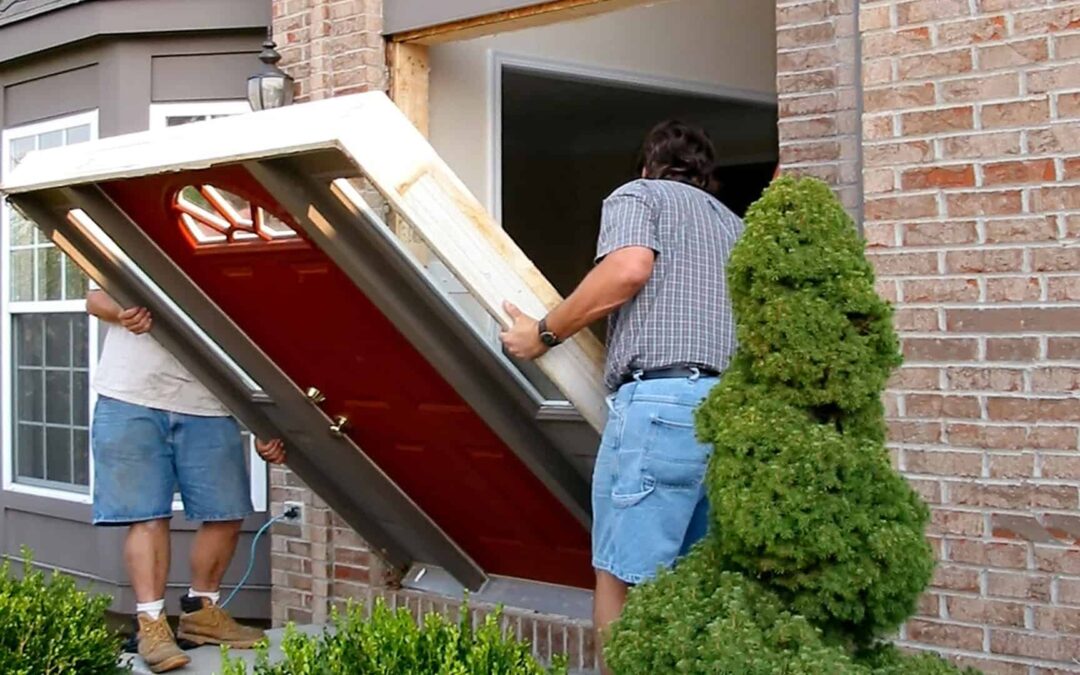
by freyaparker | Oct 15, 2025 | Others
Replacing or installing a new front door is one of the best ways to improve your home’s curb appeal, security, and energy efficiency. However, it can also be a costly project if not planned carefully. The good news is that with the right approach, you can save money on front door installation without compromising on quality or style. Let’s look at some smart and effective ways to reduce your costs while still getting the results you want.
1. Plan and Budget Early
The first step in saving money on front door installation is to plan ahead. Start by setting a clear budget that covers not just the cost of the door but also materials, hardware, and labor. Many homeowners make the mistake of focusing only on the door price and overlook additional expenses like frames, handles, hinges, and painting.
Planning early allows you to compare prices from different suppliers and contractors. Take your time to research average installation rates in your area and look for local services such as Entry Door Sales & Installation in Fort Wayne, IN, which often provide both products and installation at competitive rates.
2. Choose the Right Material for Your Budget
Front doors come in a variety of materials — wood, fiberglass, steel, and composite. Each type has its pros and cons, but choosing the right one based on your needs and budget is key to saving money.
-
Wood doors offer classic beauty but can be expensive and require more maintenance.
-
Steel doors are more affordable and durable, making them a great budget-friendly option.
-
Fiberglass doors provide excellent insulation and low maintenance at a mid-range price point.
If your main goal is long-term savings, consider fiberglass or steel options. They last longer and help reduce energy bills due to better insulation.
3. Compare Quotes and Look for Package Deals
Never settle for the first quote you receive. Always ask for multiple estimates from different installers. Some contractors may include additional costs like disposal of old doors or painting fees that others might exclude.
In many cases, local service providers that specialize in Entry Door Sales & Installation in Fort Wayne, IN offer discounts when you purchase both the door and installation together. This kind of package deal can help you save a considerable amount compared to hiring separate suppliers and installers.
4. Time Your Purchase Wisely
Just like any home improvement project, timing can make a big difference in how much you spend. Prices for doors and installation services often fluctuate throughout the year. Spring and summer tend to be busy seasons for contractors, which can drive up labor costs.
If possible, schedule your installation during the off-season — fall or winter — when companies are less busy. You’re more likely to find discounts and special offers during these times.
5. Consider Minor Repairs Instead of Full Replacement
Before replacing your entire front door, assess whether it really needs a complete replacement. Sometimes, simple repairs such as fixing hinges, replacing weatherstripping, or repainting can restore your door’s appearance and performance.
If your door frame is still in good condition, you can install a new slab instead of a full pre-hung door. This option costs significantly less because it uses your existing frame, saving on both material and labor.
6. Do Some Prep Work Yourself
Another simple way to save money is to handle some of the preparation work on your own. For instance, you can remove the old door, trim, or molding before the installer arrives. Clearing the workspace can reduce the total time spent on the job, which might lower your labor costs.
Just make sure you’re comfortable doing these tasks safely. If not, leave the complex steps to professionals to avoid damage or extra repair costs later.
7. Focus on Energy Efficiency
While it might seem like an extra expense upfront, choosing an energy-efficient door can save you money in the long run. Look for doors with good insulation ratings, weather seals, and energy-efficient glass panels.
These features help reduce heating and cooling costs throughout the year. Over time, the savings on your utility bills can offset the initial installation expense.
8. Work with Reliable Professionals
While the temptation to hire the cheapest installer is understandable, it’s not always the best choice. Poor installation can lead to drafts, leaks, or even damage to your home’s structure. Instead, hire trusted and experienced contractors who have positive reviews and proven expertise.
A reliable company ensures that the installation is done correctly the first time, helping you avoid costly repairs later. Checking references and online feedback before hiring can go a long way in ensuring value for your money.
9. Learn from Local Experts
If you’re in Indiana, you can benefit from experienced professionals like Boss Windows LLP, a trusted name known for providing high-quality and affordable door installations. Homeowners often appreciate their transparent pricing, attention to detail, and reliable customer service. Working with a company that understands local needs and climate conditions helps ensure a lasting, cost-effective result.
They also collaborate with several suppliers, which often allows customers to access better material options without overspending — making them a practical choice for anyone looking to save without compromising on quality.
10. Take Advantage of Rebates and Discounts
Many manufacturers and local suppliers offer rebates or seasonal discounts on doors, especially energy-efficient models. Keep an eye out for these deals, or ask your installer if they’re aware of any ongoing offers.
For homeowners exploring Entry Door Sales & Installation in Fort Wayne, IN, these promotions can provide an added layer of savings — especially when combined with professional installation from reliable local providers.
11. Maintain Your Door Regularly
Finally, saving money doesn’t stop once your new door is installed. Regular maintenance keeps it in good shape for years to come. Clean it periodically, inspect weather seals, and repaint or refinish it when necessary.
A well-maintained door lasts longer, prevents energy loss, and saves you from premature replacements or costly repairs in the future.
Conclusion
Saving money on front door installation isn’t about cutting corners — it’s about making smart choices. By planning ahead, comparing quotes, selecting the right materials, and working with trusted professionals, you can get a beautiful, durable, and energy-efficient front door at a fair price.
Companies like Boss Windows LLP make the process easier for homeowners by offering reliable service, honest pricing, and expert advice. When paired with good research and careful budgeting, you’ll enjoy long-term savings and a front door that adds real value to your home.

by RaviKrJha | Oct 15, 2025 | Others
From the bustling streets of Minneapolis to the scenic highways winding around the Land of 10,000 Lakes, Minnesotans spend a lot of time on the road. But with changing weather conditions, unpredictable traffic, and ever-evolving laws, having reliable auto insurance in Minnesota isn’t just a legal requirement — it’s a smart way to protect yourself, your vehicle, and your finances.
Whether you’re a daily commuter, a weekend adventurer, or simply someone who loves the open road, understanding Minnesota’s auto insurance requirements and coverage options is essential.
Why Auto Insurance Matters in Minnesota
Auto insurance isn’t just about complying with state laws — it’s about financial protection and peace of mind. In Minnesota, winters can bring icy roads, heavy snowfall, and black ice, while summer storms can cause flooding and hail damage. Even the most careful driver can’t control weather conditions or other drivers’ actions.
That’s where auto insurance steps in. It covers the costs of repairs, medical expenses, or legal liabilities that can arise from accidents, theft, or damage. Without adequate coverage, a single accident could lead to thousands of dollars in out-of-pocket expenses.
Simply put, auto insurance is not just protection for your vehicle — it’s protection for your livelihood and your future.
Minnesota Auto Insurance Requirements
Minnesota is a no-fault insurance state, which means your insurance pays for certain expenses — like medical bills and lost wages — regardless of who caused the accident.
Here are the minimum coverage requirements every driver in Minnesota must carry:
1. Personal Injury Protection (PIP)
This ensures that you and your passengers have immediate access to medical and wage-replacement benefits after an accident, no matter who’s at fault.
2. Liability Coverage
-
Bodily Injury:
-
Property Damage:
Liability coverage pays for damages and injuries you cause to others in an accident.
3. Uninsured and Underinsured Motorist Coverage
-
$25,000 per person / $50,000 per accident (uninsured)
-
$25,000 per person / $50,000 per accident (underinsured)
This protects you if you’re hit by a driver who has no insurance or insufficient coverage.
While these are the state minimums, most drivers benefit from higher limits or additional protection to avoid major out-of-pocket costs in a serious accident.
Types of Auto Insurance Coverage You Should Consider
Beyond Minnesota’s mandatory minimums, several additional coverages can strengthen your financial protection:
1. Collision Coverage
Pays for damage to your own car if you collide with another vehicle or object, regardless of fault.
2. Comprehensive Coverage
Covers damage caused by non-collision events — theft, fire, hail, vandalism, falling trees, or hitting a deer (a common occurrence in Minnesota).
3. Gap Insurance
If you lease or finance your car, gap insurance pays the difference between your car’s value and what you still owe on your loan if the vehicle is totaled.
4. Roadside Assistance
A helpful add-on that covers towing, flat tires, dead batteries, or lockouts — especially useful during harsh Minnesota winters.
5. Rental Reimbursement
Covers the cost of a rental car while your vehicle is being repaired after a covered accident.
Adding these coverages ensures that you’re not just compliant with the law, but truly protected against the realities of driving in Minnesota.
Common Risks Minnesota Drivers Face
Minnesota’s unique geography and weather patterns make certain driving risks more common than in other states:
1. Severe Winter Conditions
Snow, ice, and freezing rain make roads slippery and visibility poor. Even careful drivers face higher accident risks during the winter months.
2. Deer Collisions
Minnesota ranks among the top states for deer-related accidents. Comprehensive coverage is essential to cover these types of damages.
3. Storm and Hail Damage
Spring and summer storms can cause major hail damage to vehicles parked outdoors. Comprehensive coverage helps you recover repair costs.
4. Uninsured Drivers
Despite mandatory laws, some drivers still operate without insurance. Having uninsured and underinsured motorist coverage protects you from their negligence.
Factors That Affect Auto Insurance Rates in Minnesota
Your auto insurance premium is determined by several factors unique to you and your vehicle:
-
Driving Record: Accidents or traffic violations can raise your premiums.
-
Age and Experience: Younger drivers typically pay higher rates due to limited experience.
-
Location: Urban areas like Minneapolis and St. Paul often have higher rates due to traffic density and theft risks.
-
Vehicle Type: Newer, luxury, or high-performance cars cost more to insure.
-
Credit History: Many insurers use credit-based insurance scores to determine risk levels.
-
Coverage Level: More coverage and lower deductibles increase premiums — but also provide better protection.
-
Annual Mileage: The more you drive, the greater your exposure to risk.
To get the best rates, maintaining a clean driving record, bundling policies, and working with a trusted local agency can make a big difference.
Tips for Saving on Auto Insurance in Minnesota
Even with comprehensive protection, there are several ways to lower your insurance costs:
-
Bundle Your Policies: Combine auto and home insurance for multi-policy discounts.
-
Increase Your Deductible: Raising your deductible can lower your monthly premiums.
-
Install Safety Devices: Anti-theft devices, alarms, and dashcams may qualify for discounts.
-
Maintain Good Credit: Better credit scores can result in lower rates.
-
Ask About Discounts: Many insurers offer safe driver, low-mileage, or student discounts.
-
Review Your Policy Annually: As your car ages or your situation changes, you may be eligible for rate adjustments.
Fallon Insurance Agency: Minnesota’s Trusted Auto Insurance Partner
When it comes to protecting your vehicle and your wallet, having a trusted local expert makes all the difference. Fallon Insurance Agency (https://falloninsuranceagency.com/) has been helping Minnesota drivers find affordable, reliable auto insurance coverage tailored to their unique needs.
Unlike one-size-fits-all online policies, Fallon Insurance Agency takes a personal approach. Their team understands Minnesota’s roads, weather challenges, and insurance regulations — ensuring you get the right protection without paying for unnecessary extras. From liability and collision coverage to comprehensive plans that guard against deer collisions and icy road mishaps, their specialists are committed to helping you drive with confidence year-round.
With Fallon Insurance Agency, you don’t just get a policy — you get a partner who cares about your safety, savings, and peace of mind on every mile.
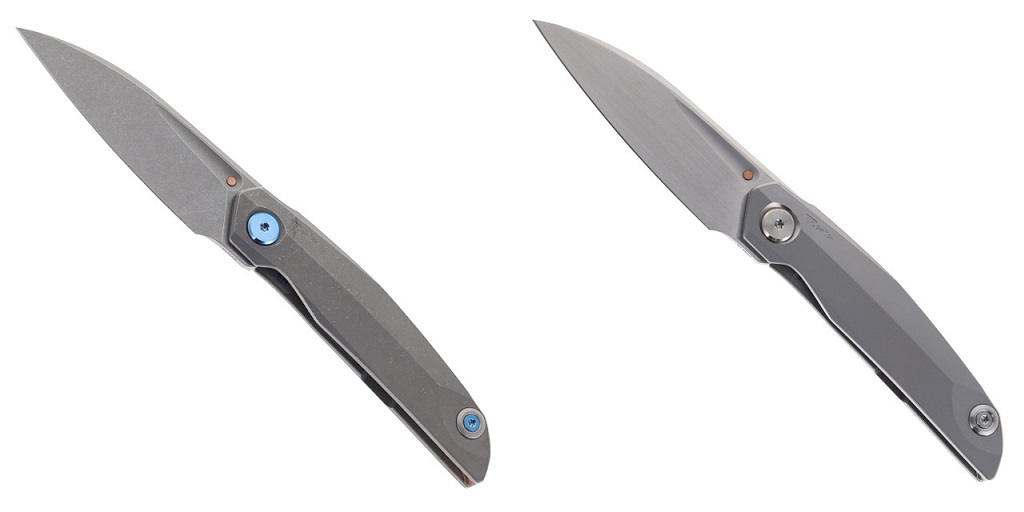
by tonystark | Oct 15, 2025 | Others
If you live in a place where you can carry a gravity knife, make it a Reate gravity knife such as a Reate EXO-M.
These are some of the highest quality gravity knives in the industry and there’s plenty you’ll love about them. Here are some of their biggest selling points.
Simplicity
These Reate knives have this in common with other gravity knives, but unlike automatic knives and assisted openers, there are no complex mechanisms or springs that can fatigue and fail, or just fall out of alignment.
The Reate EXO-M’s blade slides in and out of the handle on rails – that’s it. There are no rollers, hinges, pins, or other mechanisms to fail.
Not only does that make this Reate gravity knife (and others like it) more enjoyable to use and more intuitive to figure out, it also means there’s less that can go wrong. For what it’s worth it also streamlines cleaning and maintenance.
A Strong Lock
In the realm of knives that are technically folders, the EXO-M’s “slide lock” is one of the toughest locks in the industry, bar none – including bar locks, excusing the pun.
There are other good folding knife locks out there, but because this isn’t a conventional folder, rather an OTF gravity knife that doesn’t have an opening mechanism – you just use gravity – the lock is extremely simplistic and extremely strong.
There’s really not much that could go wrong with this knife or its lock short of some catastrophic failure of parts, in which case you’re looking at a worse issue than a failed slide lock.
Super Steel
Another thing to love about this Reate gravity knife is its artful use of super steel – in this case, Elmax, an alloy that has been called ‘the best all-around knife steel’ by some critics.
That’s generous praise, but it is certainly a very solid knife steel no matter what metrics you apply to its assessment.
Elmax steel is a high carbon, high chrome, high vanadium steel that also packs in a bit of molybdenum and manganese.
With almost 2% carbon, this steel can take and hold an edge; 18% chromium helps ensure a high degree of corrosion resistance, and with 3% vanadium, this steel is extremely tough and has plenty of carbide-forming capabilities.
Ultimately, given this chemical analysis, you get a steel that is very tough, very resistant to rust, and able to take and hold a very sharp edge – all of which you want in a high quality gravity knife.
Cool Factor
Let’s just face a simple truth: there’s something undeniably cool about carrying and using a gravity knife or an auto, and this knife has it.
Fidget Friendliness
These Reate gravity knives also score really high on fidget friendliness because it is addictive to manipulate the blade absentmindedly. This makes them highly desirable as carry knives for those with fidgety tendencies.
Where to Learn More About This Reate Gravity Knife (and Explore Others)
This is far from a complete list of all the reasons that you might like this Reate gravity knife, but it is nonetheless a pretty fair place to start.
If you’re thinking you might prefer some other gravity knife, some other Reate knife, or something entirely different better than this, visit White Mountain Knives.
They carry not just this but other knives from Reate, a bunch of other auto knives, and they represent the top brands in the knife industry. They also stock a whole lot of exclusive models.
For more information visit their website, and if you’re looking for something you don’t see listed, contact them at WhiteMountainKnives@gmail.com.
For more information about Best Gerber Knife and Best Cold Steel Knife Please visit: White Mountain Knives, LLC.
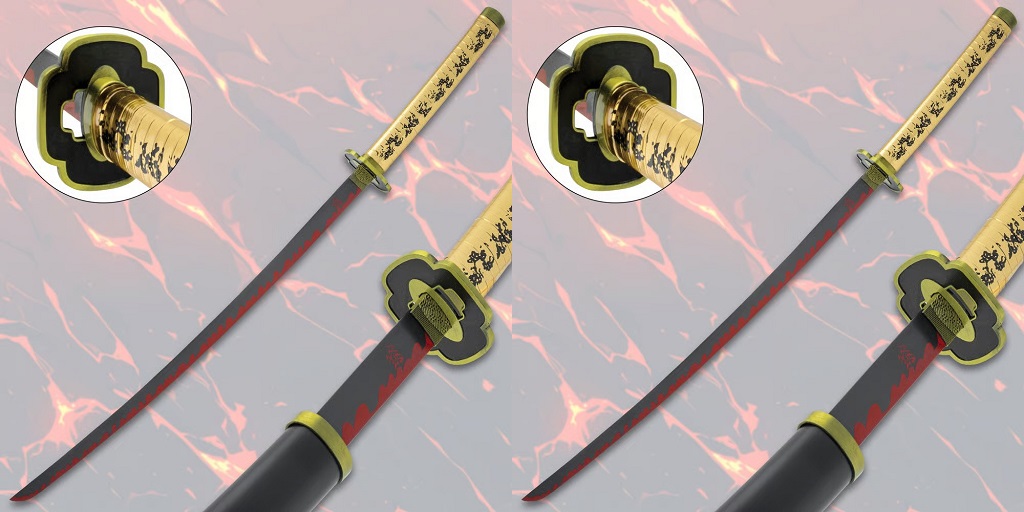
by tonystark | Oct 15, 2025 | Others
In Demon Slayer: Kimetsu no Yaiba, swords are more than just weapons. They are extensions of their wielder’s spirit and breathing style. Few blades are as mysterious and significant as the one connected to Yoriichi Tsugikuni, the legendary first user of Sun Breathing.
In the third season, Tanjiro stumbles across a centuries-old sword hidden within the Yoriichi Type Zero combat doll, raising questions about whether it is the real Yoriichi sword, its true color, and why this weapon seems to change in appearance.
The Sword’s Discovery
During Tanjiro’s grueling training with the Yoriichi Type Zero doll, he finally manages to push past his exhaustion and slice through the doll, and uncovers a hidden sword sealed inside for over three hundred years.
Many fans immediately suspected that this was Yoriichi’s very own weapon, preserved from a time long past.
But Is It? Why the Sword’s Appearance Differs
Flashbacks in the anime show the Yoriichi sword has distinctive features: a gold-dipped hilt with a textured grip, a rectangular guard, and a black sheath. Yet the blade Tanjiro retrieves looks very different.
Its crossguard is circular, its handle is wrapped in yellowed cloth rather than gold, and its sheath is white rather than black. These details cast doubt on whether the sword is truly Yoriichi’s original.
The discrepancies may be explained by centuries of maintenance—or neglect. Over time, fittings could have been replaced, wrappings deteriorated, and decorative gold stripped away. The Kotetsu family, descendants of swordsmiths who maintained the doll, might have altered or repaired the blade across generations.
With no official explanation given, the anime leaves viewers to accept that despite these cosmetic differences, the sword is indeed tied to Yoriichi’s legacy.
The Restoration of the Blade
Once uncovered, the eccentric swordsmith Haganezuka works obsessively on reviving the sword to its prime state. When complete, the blade regains its brilliance and is refitted with a new guard, one gifted from the Rengoku family, carrying the flame design once belonging to Kyojuro Rengoku.
The Black Blade and Its Transformation
When Tanjiro finally wields the reforged sword, its true nature becomes clear. The blade turns black, the rarest and most enigmatic Nichirin color. Black swords are often considered unlucky, as their meaning was historically unknown.
Yet with Tanjiro, the black blade reflects his connection to Sun Breathing, the original technique from which all others descend.
What makes this sword even more remarkable is its ability to glow red with a flame-like pattern under certain conditions. This transformation mirrors the ability once displayed by Yoriichi himself.
The change occurs when the user pushes beyond ordinary limits, channeling an intense life force into the weapon. The red hue not only increases the sword’s cutting power but also allows it to nullify demons’ regenerative abilities, making it one of the most lethal tools in existence.
Why the Color Change Matters
The shifting colors of the sword symbolize Tanjiro’s growth. Early in the series, his blades often shattered, either because of his inexperience or because they could not withstand the strain of Sun Breathing.
With Yoriichi’s sword reforged and awakened, Tanjiro finally wields a sword that matches his potential. The black foundation represents his path as a Sun Breather, while the red glow signifies the awakening of his deeper power, linking him directly to Yoriichi’s legacy.
The real color of Yoriichi’s sword is not simply black or red; it is both. Black is its natural state, rare and mysterious, but when wielded at its peak, the blade shifts into a blazing red, echoing the flames of the sun itself.
This duality makes the weapon a perfect reflection of Yoriichi and Tanjiro: warriors who fight not for glory, but to bring light into a world plagued by darkness. The color change is not just cosmetic; it is a sign of the wielder’s bond with Sun Breathing, their resolve, and their will to destroy demons at the root.
For more information about Sword Cane and Lord Of The Rings Swords Please visit: True Swords.
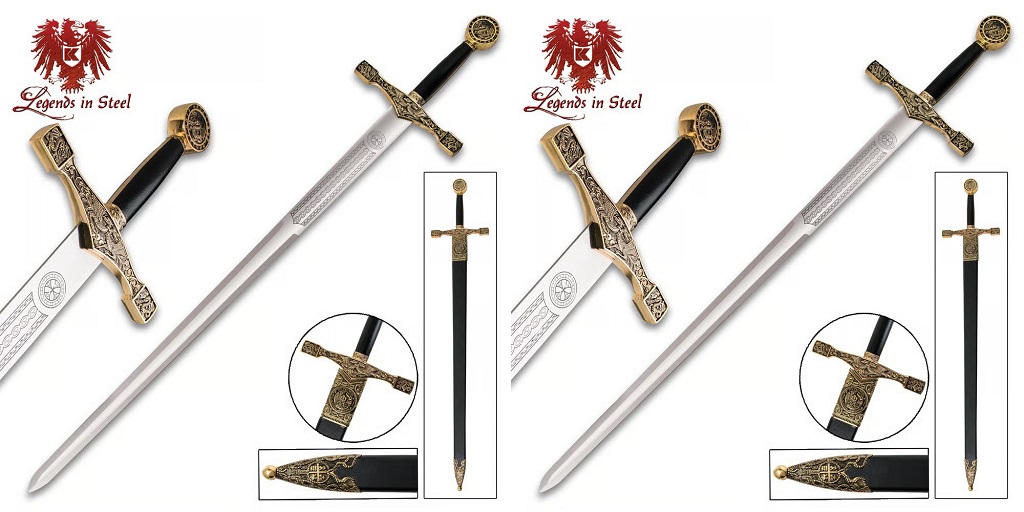
by tonystark | Oct 15, 2025 | Others
When most people think about self-defense, they imagine things like pepper spray, a baseball bat, or maybe a firearm. Swords often aren’t someone’s first choice, but history buffs, martial artists, or fans of action movies might consider them.
While swords do look impressive and have a certain cool factor, though, whether they’re practical for modern self-defense is a different story. So, can a sword really protect you in a dangerous situation, and if so, what is the best sword for self-defense? Read on below for the answers:
The Reality of Using a Sword for Self-Defense
First, let’s be honest: a sword is not the most practical self-defense tool today. Unlike a handgun or even a knife, a sword is big, difficult to conceal, and not exactly the easiest thing to carry around. Chances are, you can’t walk into a grocery store with a katana strapped to your belt without turning more than a few heads. Additionally, swords require skill to be used effectively. Without proper training, you could actually put yourself at risk by swinging wildly and losing control.
All that said, a sword is still a weapon – and a very intimidating one at that. The mere sight of a blade can be enough to make an attacker think twice. If you’re defending your home and you happen to have a sword within reach, it could absolutely give you an advantage, especially if you know how to handle it safely.
Legal Considerations You Can’t Ignore
Before you buy a sword and call it your new security system, you should check your local laws. In some places, owning or carrying a sword is completely legal, but in others, there are restrictions.
Using a sword in self-defense could also raise legal issues if the response is considered excessive compared to the threat. It’s always better to know the law before relying on any weapon for protection.
On Matters Regarding Training
Another important thing to remember is that a sword isn’t like a bat. You can’t just swing it blindly and hope for the best. Proper sword use involves footwork, grip, and controlled strikes.
Martial arts such as kendo, iaido, or HEMA (Historical European Martial Arts) teach these skills. Taking even a few lessons can make you much more capable of defending yourself if you ever need to use a sword in an emergency.
So What Is the Best Sword for Self Defense?
If you’re serious about using a sword for self-defense in 2025, shorter and lighter blades are your best bet. A full-size longsword or katana might look amazing, but they’re harder to maneuver in tight spaces.
Instead, stick to a wakizashi (a shorter Japanese sword) or a machete-sized blade – these options are far more practical. They allow quick strikes, easier control, and faster recovery if you happen to miss.
Find Masterfully Crafted Swords on True Swords
If you’re looking for high-quality, battle-ready, and functional swords, check out the selection on True Swords. They carry broadswords, katanas, sabers, and much more.
For more information about Crusader Sword and Aragons Sword Please visit: True Swords.






